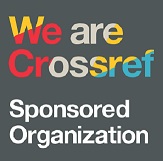STUDENTS' PERCEPTIONS AND MOTIVATION TOWARD E-LEARNING AT AKM HIGH SCHOOL DURING THE COVID-19 PANDEMIC
Abstract
The use of media in online learning became essential during the Covid-19 pandemic, necessitating a shift to remote education across Indonesia. As a solution to maintain educational continuity, e-learning emerged as an effective tool, especially in supporting English language instruction. This study explores the perceptions and motivations of eleventh-grade students at AKM High School (pseudonym) toward e-learning in their English classes during the 2020/2021 academic year. Data gathered through questionnaires and interviews revealed that 50.1% of students agreed that teachers effectively delivered lessons via e-learning, while 60.94% found the curriculum aligned with their syllabus expectations. Notably, 44.5% of students felt that e-learning improved their English skills, with 41.7% strongly agreeing that teachers facilitated productive question-and-answer sessions. Regarding motivation, 69.4% of students responded positively to the instructional media, 58.3% felt encouraged to ask questions, and 61.1% were motivated to complete assignments. However, only 50% remained motivated without assignments, and 58.3% expressed a sustained enthusiasm for English learning through e-learning. The findings suggest that students generally perceive e-learning as flexible and effective, though challenges such as procrastination emerged. Overall, e-learning has proven to be a viable alternative, fostering positive attitudes and motivation for learning from home during challenging times.
Keywords
Full Text:
PDFReferences
Akbar, M. F., Salsabila, R. S., Wahyudi, M. F., Dewi, A. P. M., Gaol, F. L., Matsuo, T., & Hutagalung, F. (2023). The impact of the development of learning technology media on the learning process for high school students. Lecture Notes on Data Engineering and Communications Technologies, 141, 785–796. https://doi.org/10.1007/978-981-19-3035-5_58
Alomyan, H. (2023). University students' attitudes towards online learning during the COVID-19 pandemic. In Proceedings of the International Conferences on ICT, Society, and Human Beings 2023, ICT 2023; and e-Health 2023, EH 2023; Connected Smart Cities 2023, CSC 2023; and Big Data Analytics, Data Mining and Computational Intelligence 2023, BigDaCI 2023 (pp. 89–96). 16th International Conference on ICT, Society and Human Beings, Porto.
Anggrisia, N. F., Rosyidah, I., & Riza, A. (2020). Word formation process on best seller food brand name in Grab and Go-Jek application. Journal of English Language Teaching and Learning (JETLE), 1(2). https://doi.org/10.18860/jetle.v1i2.9154
Bates, A. W. T. (2019). Media theory. In Springer Briefs in Open and Distance Education (pp. 95–104). Springer. https://doi.org/10.1007/978-981-13-7740-2_11
Burac, M. A. P., Fernandez, J. M., Cruz, M. M. A., & Cruz, J. Dela. (2019). Assessing the impact of e-learning system of higher education institution's instructors and students. In IOP Conference Series: Materials Science and Engineering, 482(1), Article 012009. https://doi.org/10.1088/1757-899X/482/1/012009
Csillik, É. (2019). Intercultural challenges of teaching in multilingual/multicultural classrooms. In Intercultural Foreign Language Teaching and Learning in Higher Education Contexts (pp. 1–25). IGI Global. https://doi.org/10.4018/978-1-5225-8128-4.ch001
Daugirdiene, A., & Brandisauskiene, A. (2023). Analysing the teacher’s activity during distance lessons: The aspect of neurocognitive processes. New Educational Review, 74, 128–138. https://doi.org/10.15804/tner.23.74.4.09
Derakhshandeh, Z., & Esmaeili, B. (2020). Active-learning in the online environment. Journal of Educational Multimedia and Hypermedia, 29(4), 299–311.
Goyal, S. (2012). E-learning: Future of education. Journal of Education and Learning (EduLearn), 6(4). https://doi.org/10.11591/edulearn.v6i4.168
Harsasi, M., & Sutawijaya, A. (2018). Determinants of student satisfaction in online tutorial: A study of a distance education institution. Turkish Online Journal of Distance Education, 19(1), 89–99. https://doi.org/10.17718/tojde.382732
Haryanto, D. A. (2015). Students’ perception on the use video animation to teaching of listening at the first graders in SMA Negeri 1 Pakel [Unpublished master’s thesis]. Universitas Negeri Malang.
Helaluddin, & Wijaya, H. (2019). Analisis data kualitatif: Sebuah tinjauan teori dan praktik. Universitas Negeri Makassar.
Indrakusuma, A. H., & Putri, A. R. (2016). E-learning: Teori dan desain. STKIP PGRI Tulungagung.
Knaus, T. (2023). Emotions in media education: How media-based emotions enrich classroom teaching and learning. Social Sciences and Humanities Open, 8(1), Article 100504. https://doi.org/10.1016/j.ssaho.2023.100504
López, A. M., Mancho, A. C., & Sein-Echaluce, M. L. (2019). Breaking down barriers to facilitate that university teachers create audio-visual learning materials. In Proceedings of the 7th International Conference on Technological Ecosystems for Enhancing Multiculturality (TEEM 2019) (pp. 776–784). ACM. https://doi.org/10.1145/3362789.3362914
Miles, M. B., & Huberman, A. M. (2015). Qualitative data analysis: An expanded sourcebook (3rd ed.). UI Press.
Mohammadi, M. (2010). Febrile seizures: Four steps algorithmic clinical approach. Iranian Journal of Pediatrics, 20(1), 5-15.
Mubarok, H., Ramadhan, I., & Anggrisia, N. F. (2022). Using infographic through reporting technique to improve speaking skill. English Language in Focus (ELIF), 4(2), 171-178. https://doi.org/10.26555/elif.v4i2.123456
Musahrain, M., Sartika, S., Nurhairunnisah, N., Yahya, F., & Noviati, W. (2023). Learning media through mobile application to improve students' understanding in higher education. AIP Conference Proceedings, 2619, Article 100004. https://doi.org/10.1063/5.0122962
Pratiwi, T. L., & Kurniati, K. (2022). Students’ perception of e-learning in English language education, Universitas Internasional Batam. IDEAS Journal on English Language Teaching and Learning Linguistics and Literature, 10(1), 601-608. https://doi.org/10.24256/ideas.v10i1.2470
Prakasha, G. S., Sangeetha, R., Almeida, S. M., & Chellasamy, A. (2022). Examining university students’ attitude towards e-learning and their academic achievement during COVID-19. International Journal of Information and Education Technology, 12(10), 1056–1064. https://doi.org/10.18178/ijiet.2022.12.10.1720
Prihartanta, W. (2015). Teori-teori motivasi. Jurnal Adabiya, 1(83), 3-17.
Priya, A. (2021). Case study methodology of qualitative research: Key attributes and navigating the conundrums in its application. Sociological Bulletin, 70(1), 94–110. https://doi.org/10.1177/0038022920970318
Proctor, R. W., & Proctor, J. D. (2021). Sensation and perception. In Handbook of Human Factors and Ergonomics (pp. 57–90). John Wiley & Sons. https://doi.org/10.1002/9781119636113.ch3
Qiong, O. (2017). A brief introduction to perception. Studies in Literature and Language, 19(2), 18-28. https://doi.org/10.3968/n
Raco, J. (2013). Metode penelitian kualitatif: Jenis, karakteristik dan keunggulannya. Grasindo.
Robah, A., & Anggrisia, N. F. (2023). Exploring challenges and strategies in English speaking among Indonesian university students: A case study of AKM university. Englisia: Journal of Language, Education, and Humanities, 11(1), 55-74. https://doi.org/10.22373/ej.v11i1.12345
Roman, R., & Nunez, A. M. (2020). Motivational factors that influence English as a foreign language learners at Quality Leadership University, Panama City, Panama. Journal of Language Teaching and Research, 11(4), 543–554. https://doi.org/10.17507/jltr.1104.03
Sabila, J. N. (2022). Students’ perception and motivation toward English e-learning during COVID-19 pandemic at the 8th grade of MTS Hasanah Pekanbaru [Undergraduate thesis, Universitas Islam Negeri Sultan Syarif Kasim Riau].
Saptono, Y. J. (2016). Motivasi dan keberhasilan belajar siswa. Jurnal Pendidikan Agama Kristen Regula Fidei, 1(1), 190-210.
Suartama, I. K. (2014). E-learning konsep dan aplikasinya. Universitas Pendidikan Ganesha.
Tan, K. H., Farashaiyan, A., Sahragard, R., & Faryabi, F. (2020). Implications of English as an international language for language pedagogy. International Journal of Higher Education, 19(1), 22–31. https://doi.org/10.5430/ijhe.v9n1p22
Tsarev, R., El Amrani, Y., Alshahrani, S. H., Al Momani, N. M., Ascencio, J., Losev, A., & Zhigalov, K. (2024). Motivation to learn in an e-learning environment with fading mark. In Lecture Notes in Networks and Systems, 910 LNNS, 91–99. Springer. https://doi.org/10.1007/978-3-031-53552-9_8
Wiranto, I. A. (2024). English students' perception and motivation on online learning: A descriptive study on English language education master program students FKIP Untan in the academic year 2022/2023. Jurnal Alwatzikhoebillah Kajian Islam Pendidikan Ekonomi Humaniora, 10(2), 376-387. https://doi.org/10.37567/alwatzikhoebillah.v10i2.2400
Wu, Y., & Wang, H. (2022). Innovation model of journalism education based on information technology under the background of new media. Mobile Information Systems, 2022, Article 8367001. https://doi.org/10.1155/2022/8367001
DOI: https://doi.org/10.30743/ll.v8i2.9534
Refbacks
- There are currently no refbacks.
Fakultas Sastra
Universitas Islam Sumatera Utara (UISU), Medan
Jl. Sisingamangaraja Teladan Medan 20217
Telp. (061) 7869911, e-mail: language_literacy@sastra.uisu.ac.id









